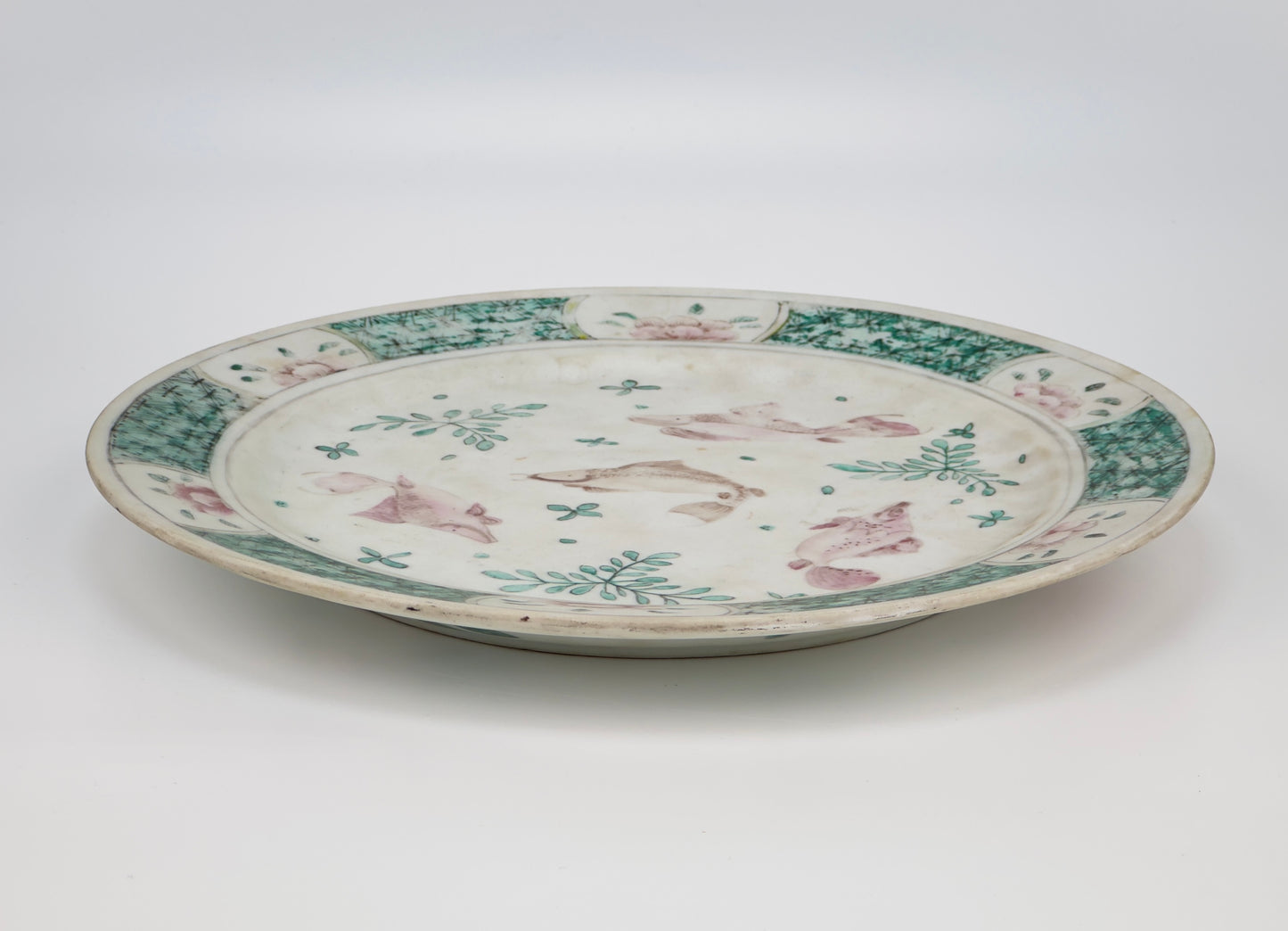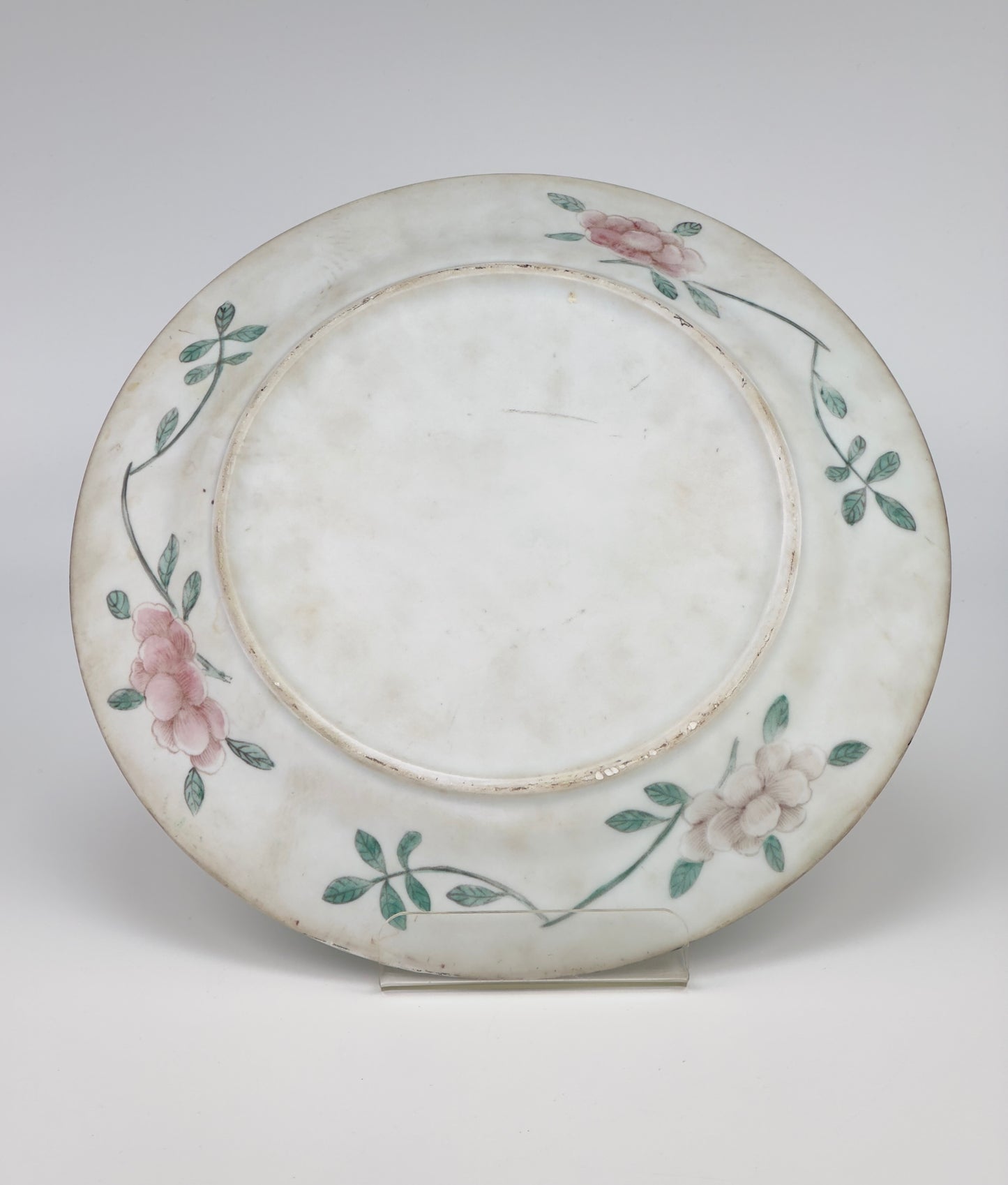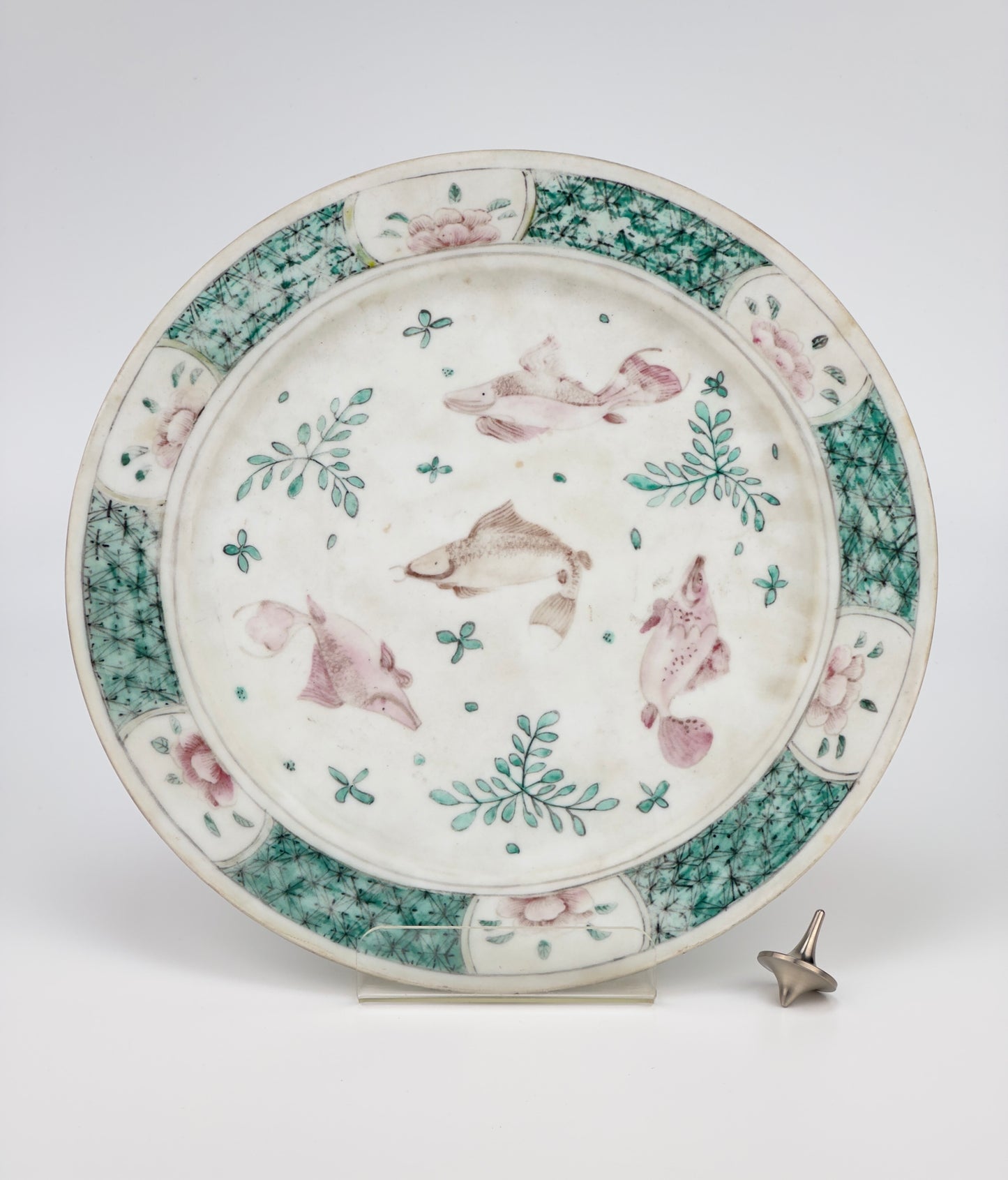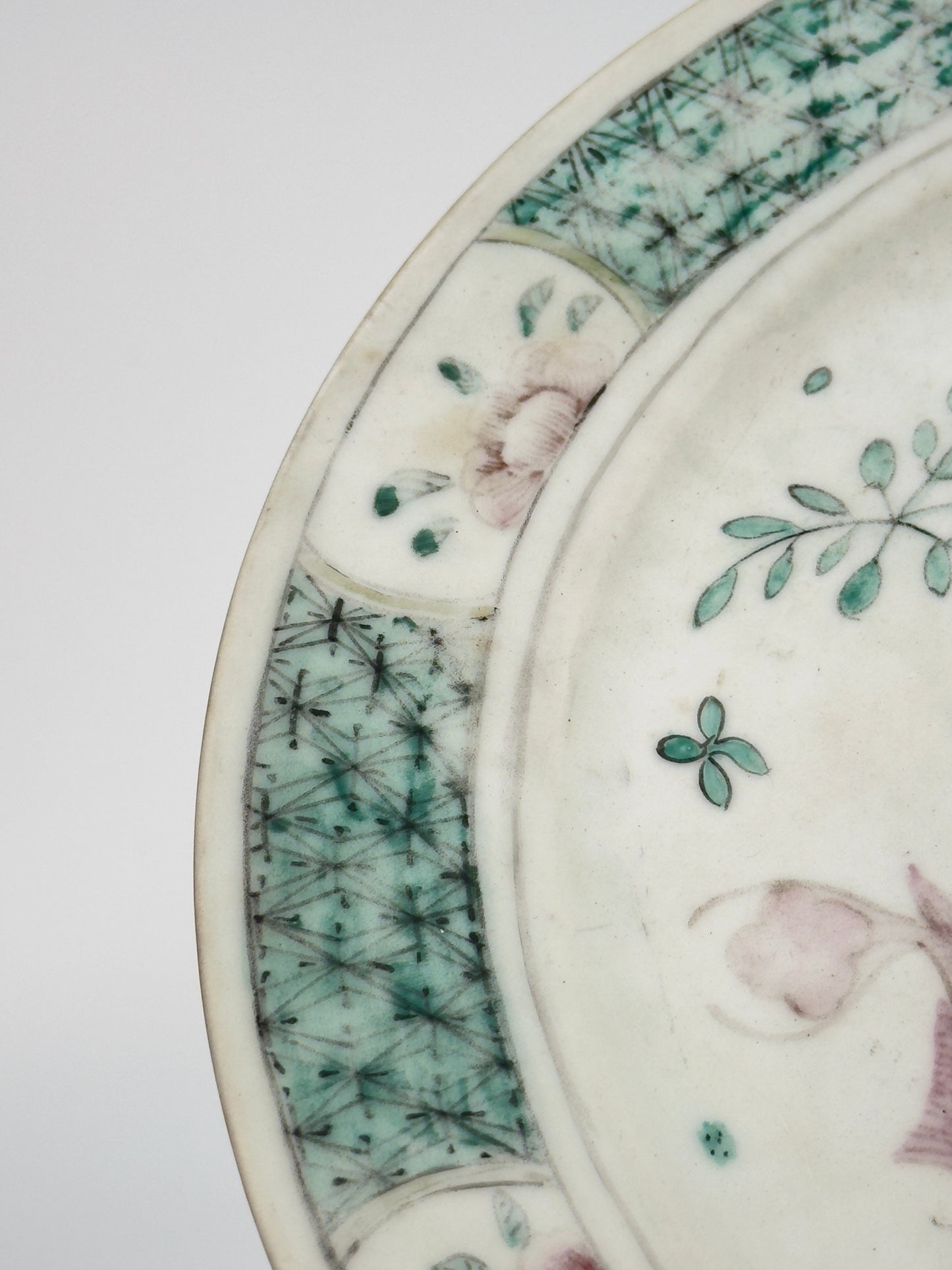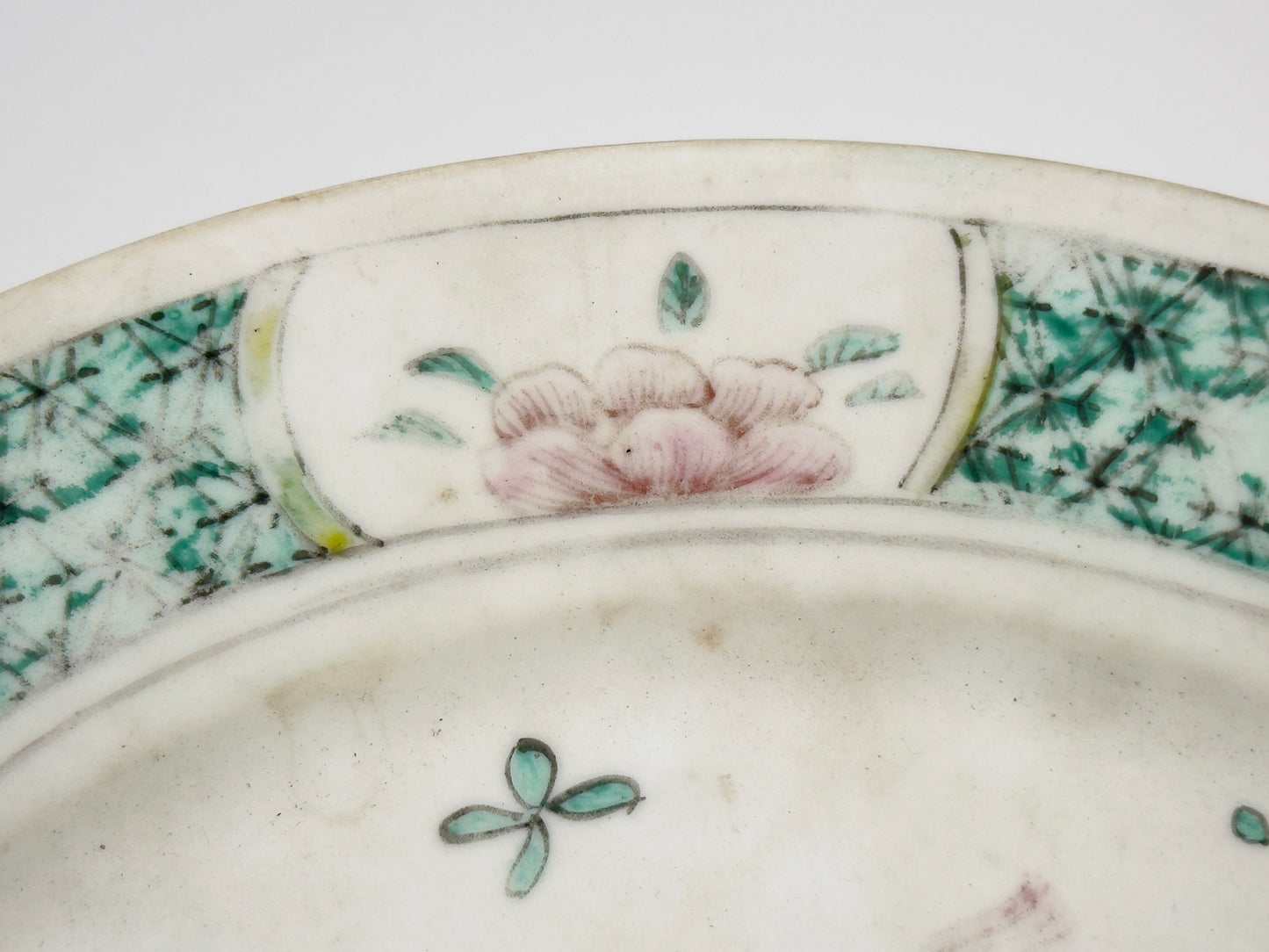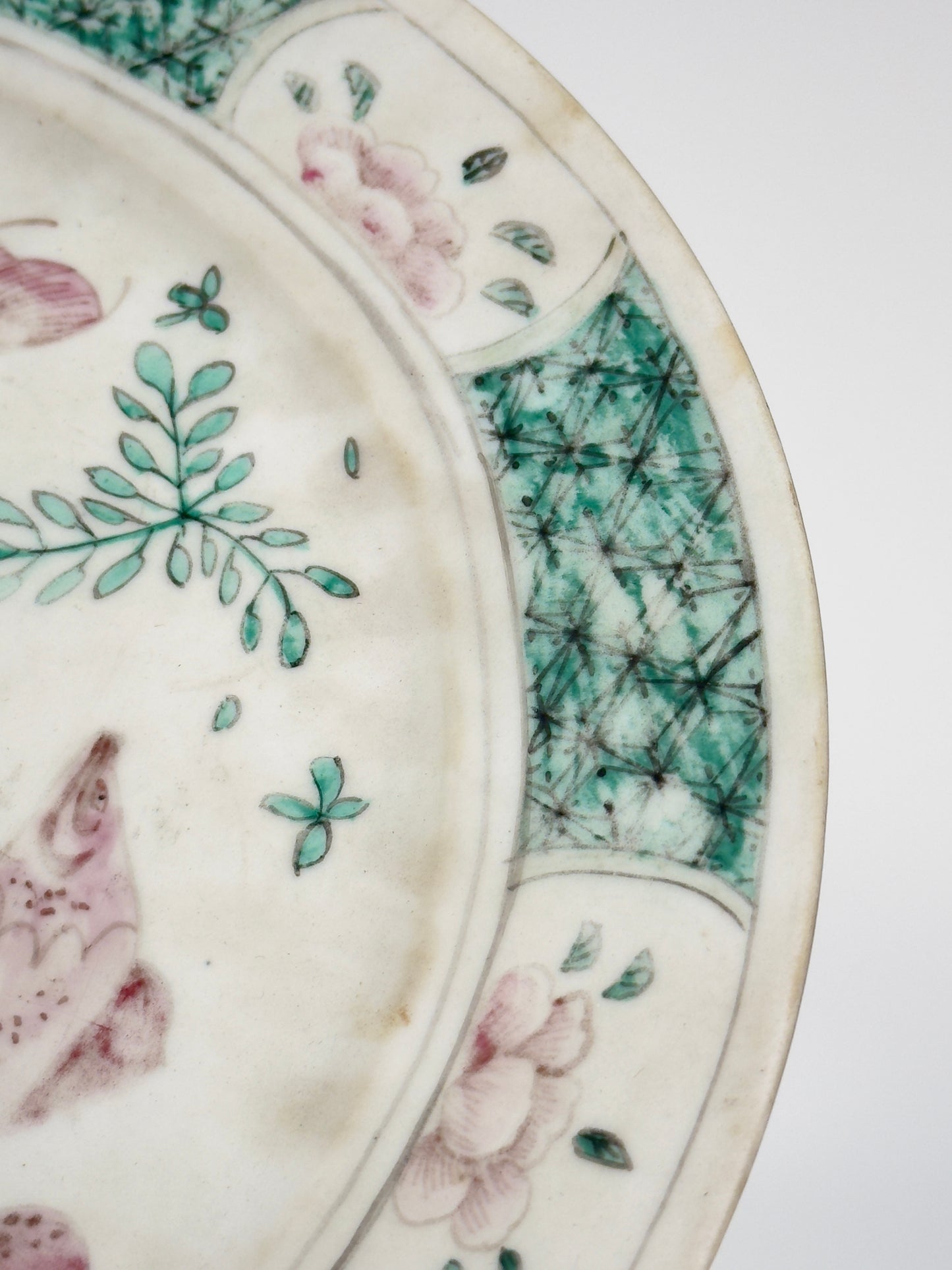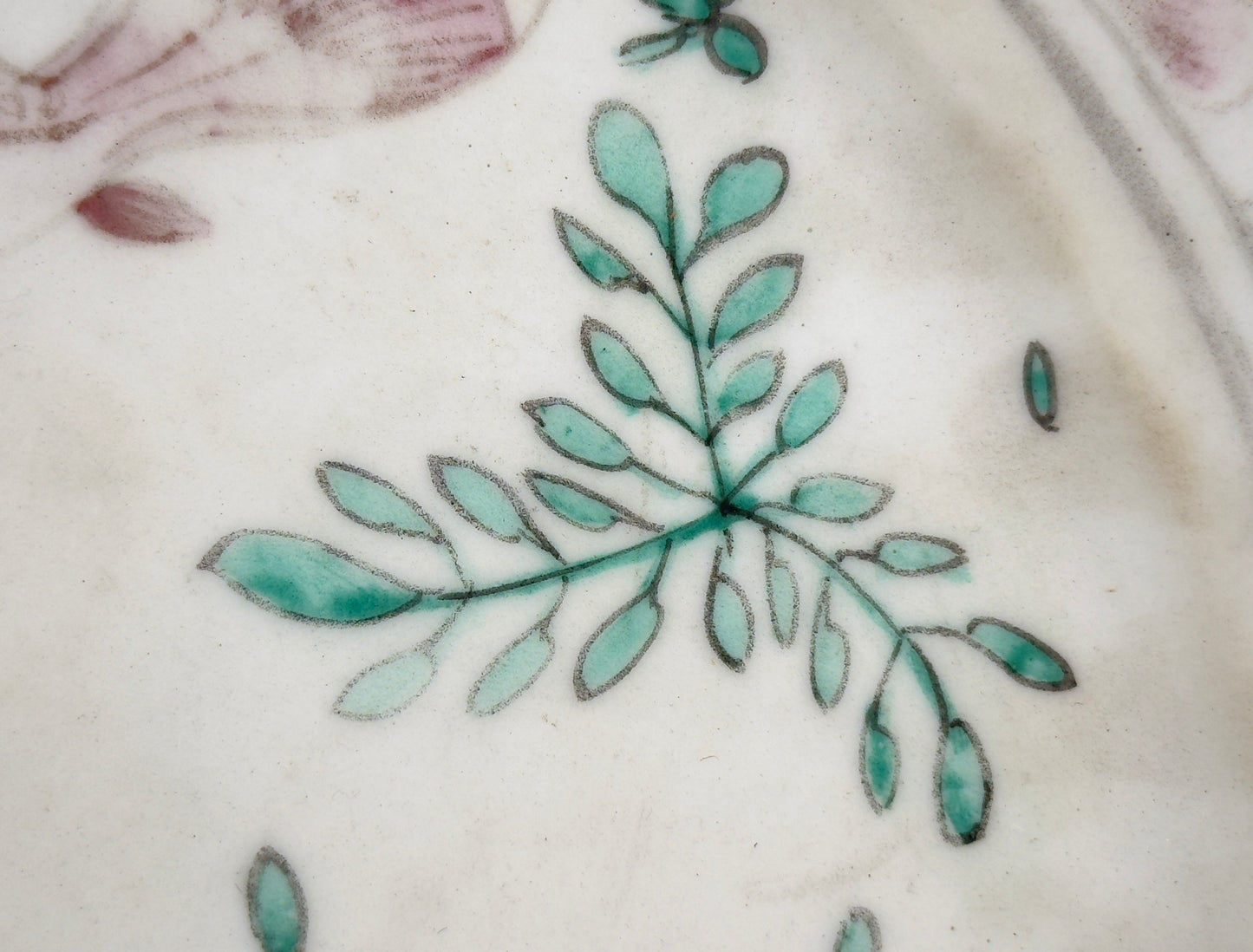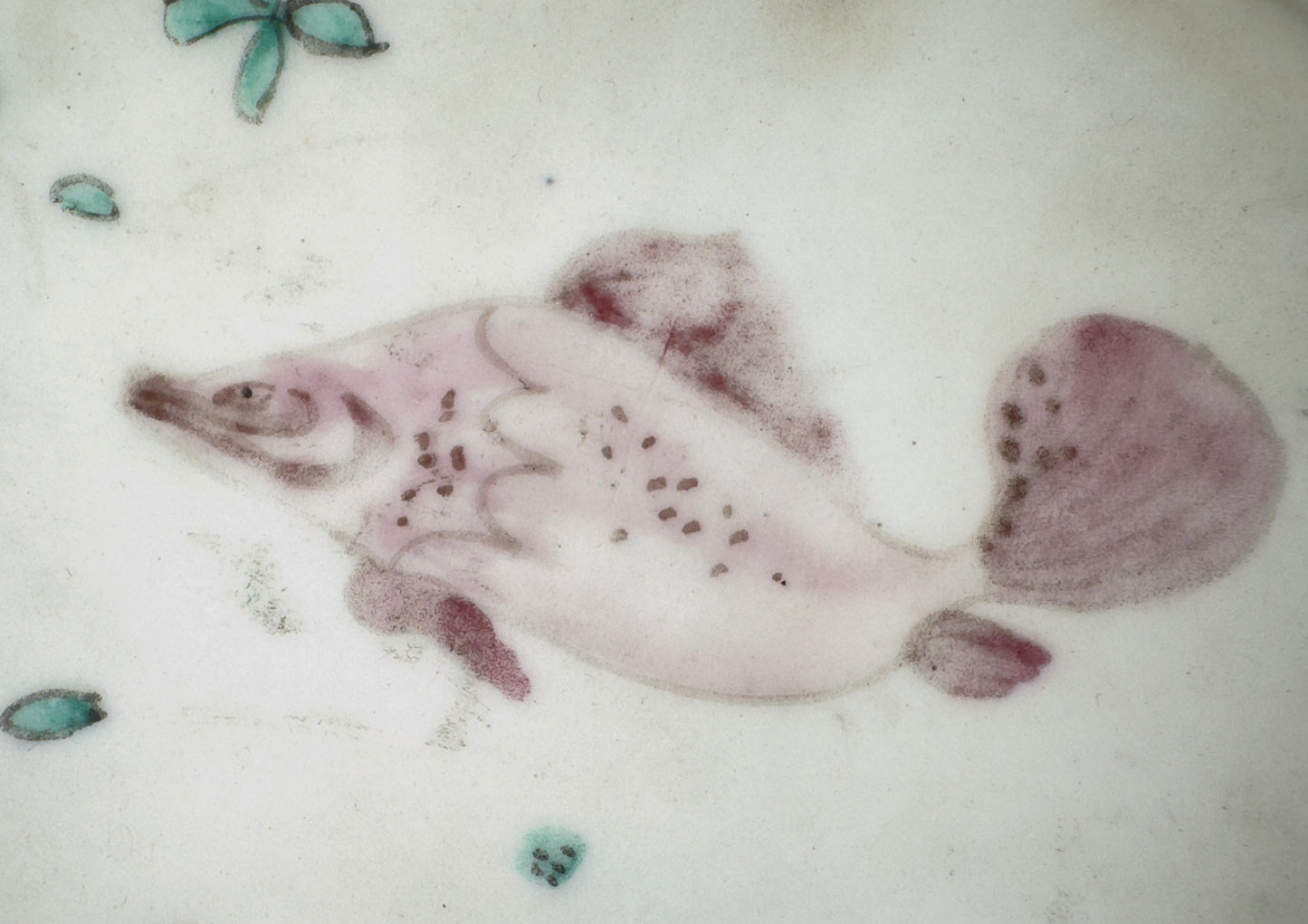CHINESE FAMILLE ROSE/VERTE 'FISH' DISH, QING DYNASTY
CHINESE FAMILLE ROSE/VERTE 'FISH' DISH, QING DYNASTY
Couldn't load pickup availability
During the Qing Dynasty, depictions of fish on ceramics carried several symbolic meanings. Fish are traditionally associated with abundance and prosperity in Chinese culture. The word for fish (魚, yú) is a homophone for surplus (余, yú), which often relates to wealth (富, fù) and the concept of having more than enough, symbolizing wishes for prosperity and abundance.
When multiple fish are depicted, as seen on the dish, it can symbolize freedom and ease, as fish move effortlessly through the water. It may also express the wish for continuous generations of prosperity, indicating family continuity and the hope for offspring to flourish. Groups of fish swimming together are commonly used to symbolize the unity and success of a family, with a desire for the family lineage to continue and prosper.
This piece is from the early Qing dynasty, and it is not clear whether it is from the Yongzheng era or the Kangxi era. Judging by the paintings of animals and backgrounds, and the similar verte/rose type ceramics purchased together, it is a Kangxi period piece.
Period : Qing Dynasty, Kangxi-Yongzheng Period
Production Date : 17-18th century
Made in : Jingdezhen
Found/Acquired : Southeast Asia , South China Sea from shipwreck
Size : 30cm(Diameter), 3cm(Height)
Condition : Good (Worn out due to underwater condition)
Reference : Christies London 4 DEC 2018 - Old Masters/New Scholars: Works of Art Sold to Benefit Rugby School - Lot 68
https://www.christies.com/lot/a-chinese-famille-verte-fish-dish-kangxi-6168832/?intObjectID=6168832&lid=1
* Famille Rose: The Famille Rose palette, which emerged in the early 18th century during the reign of the Kangxi Emperor, is characterized by the dominant use of soft pink colors derived from gold. This palette expanded the range of colors used in Chinese porcelain by including various shades of pink, along with other colors such as lavender, yellow, and green. Famille Rose pieces were often decorated with intricate designs of flowers, figures, birds, and landscapes. The enamels were typically opaque, and the colors had a soft, warm appearance. Famille Rose wares were popular both in domestic markets and in Europe, where they were highly prized.
* Famille Verte: Famille Verte porcelain, which was developed a little earlier than Famille Rose, around the late 17th century, relies heavily on different shades of green enamel alongside aubergine, black, and iron red. The green shades were achieved by using copper oxide as a pigment. Famille Verte pieces often have very sophisticated designs that include mythical creatures, flowers, and scenes from literature and history. They are known for their clear, bright colors and strong contrasts.
When Famille Rose and Famille Verte porcelains are discussed, it is important to note that although they are named for their distinctive pink and green colors, respectively, they also include a variety of other hues. However, a piece that prominently features only rose and verte colors would be particularly focused on the contrast between the warm, lush pinks and the varying shades of cool greens. This limited color scheme would still allow for a remarkable range of depth and detail, given the skill of Qing Dynasty artisans in creating gradients and layers of color.

